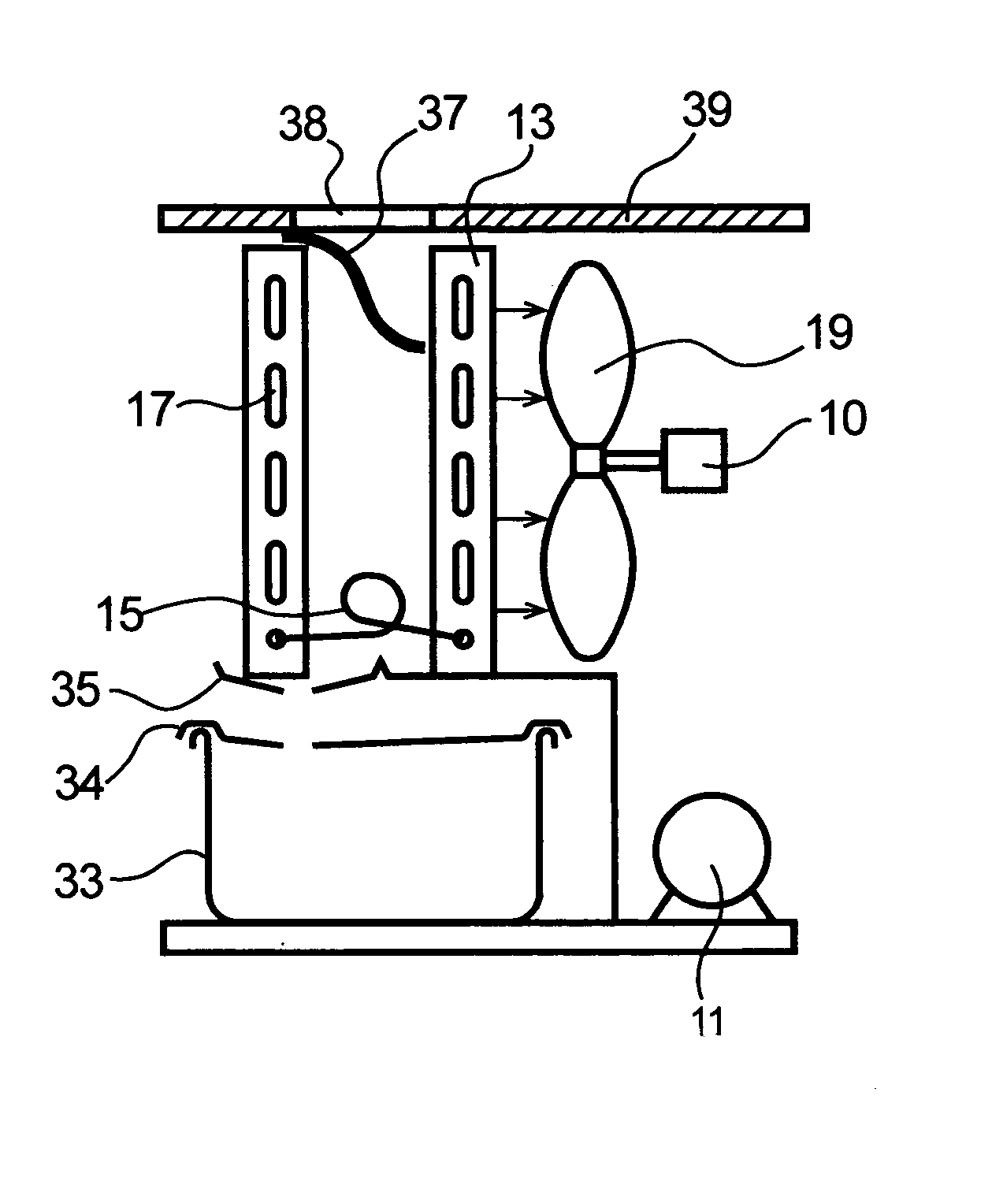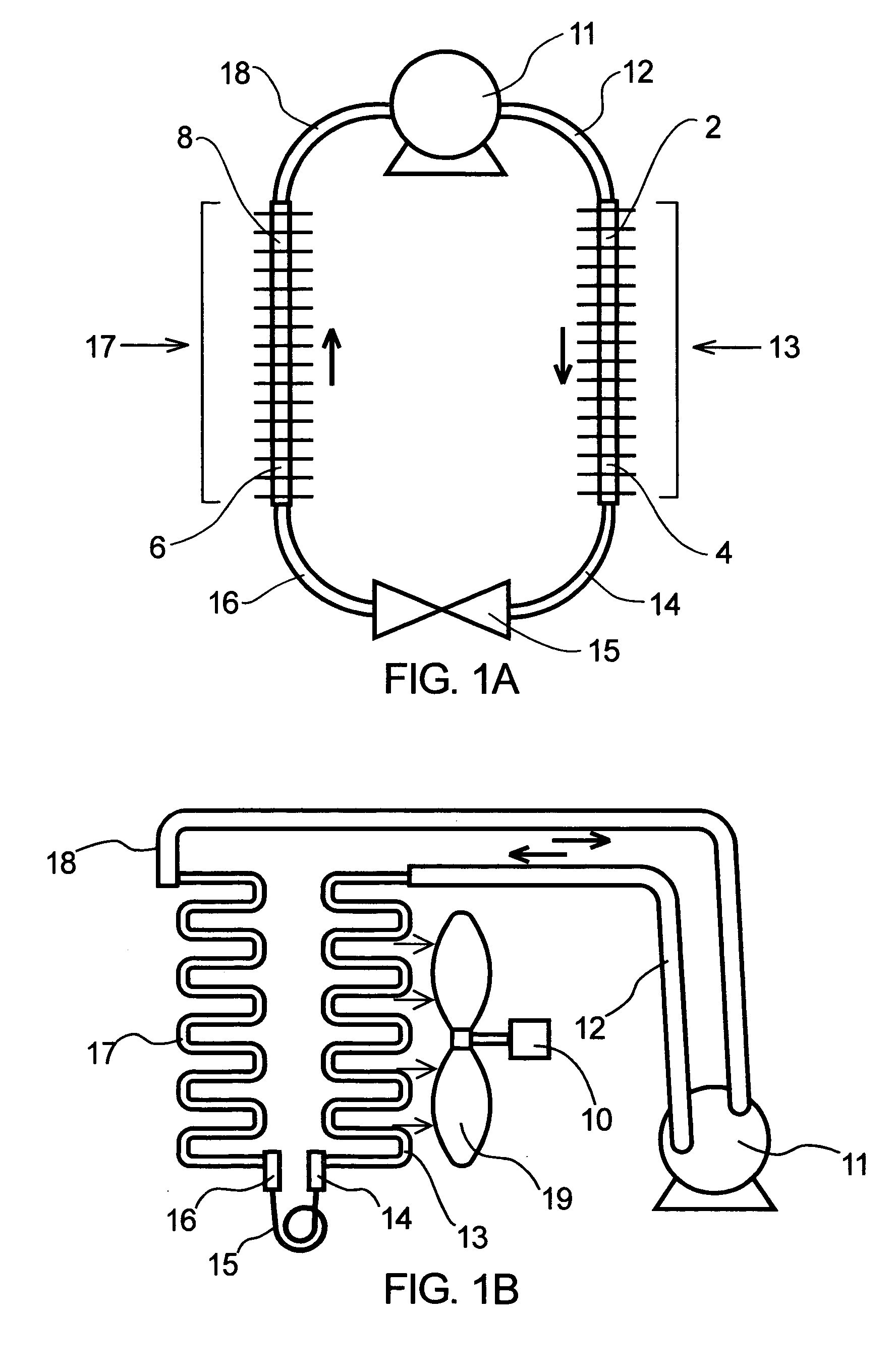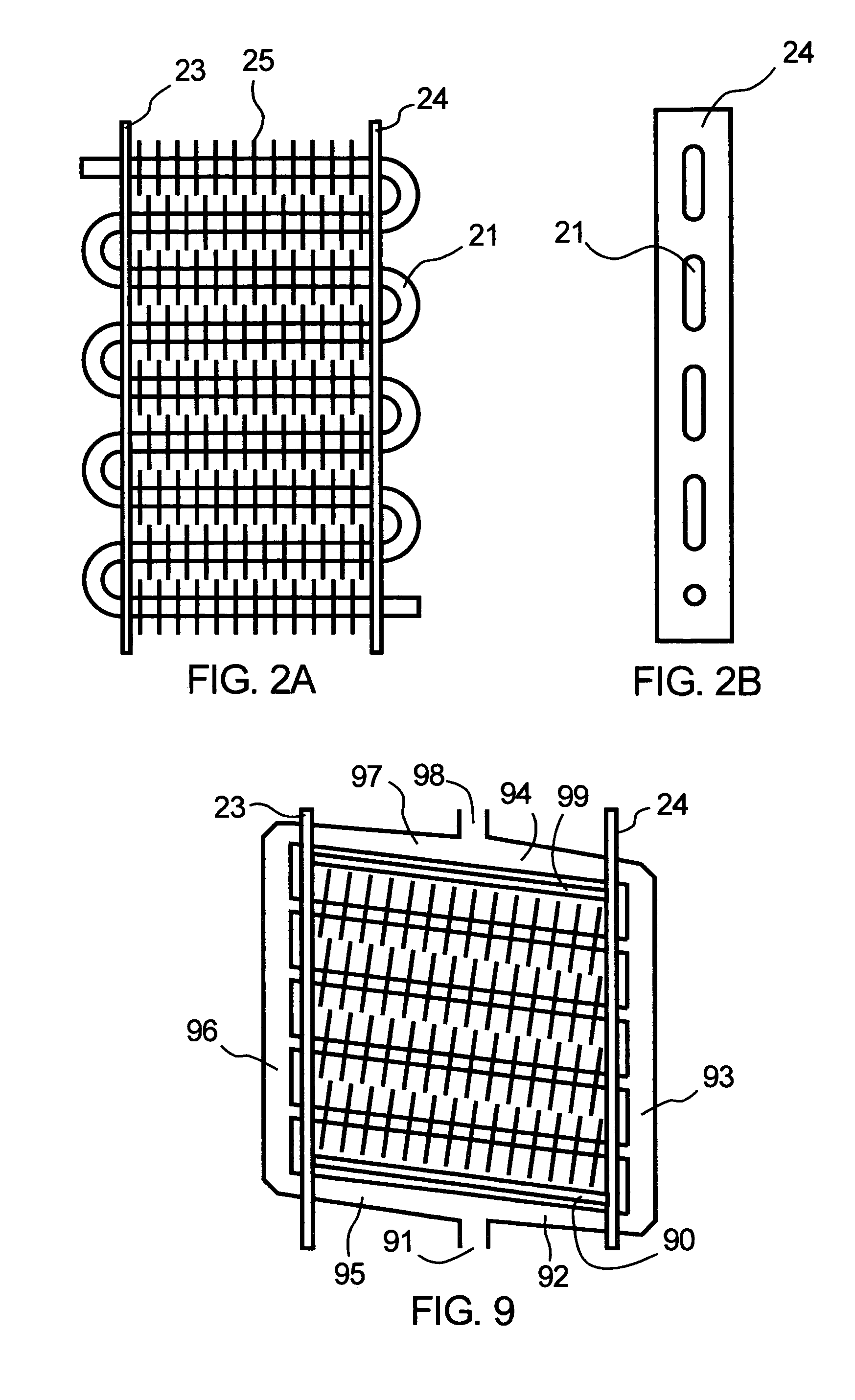Refrigeration cycle dehumidifier
a dehumidifier and refrigerant cycle technology, applied in the field of dehumidification systems, can solve the problems of vaporizing liquid and heat, and achieve the effects of improving the effectiveness of the system, reducing the superheating of the refrigerant vapor, and increasing the apparatus
- Summary
- Abstract
- Description
- Claims
- Application Information
AI Technical Summary
Benefits of technology
Problems solved by technology
Method used
Image
Examples
Embodiment Construction
[0037]FIG. 1A is a schematic of a compression-based refrigeration cycle. A compressor 11 draws in cool, low-pressure refrigerant vapor from a tube 18 and mechanically compresses this refrigerant vapor. Adiabatic heating causes the temperature of the refrigerant vapor to rise as it is compressed. The refrigerant exits the compressor as a hot, high-pressure vapor, and flows through a tube 12 to a condenser 13.
[0038] Once in condenser 13, the refrigerant first flows through a condenser inlet section 2, the first section of condenser 13. As the refrigerant flows through condenser 13, the pressurized refrigerant vapor cools, and then condenses at an essentially constant temperature. The refrigerant can become entirely liquid and cool further within condenser 13. The refrigerant flows through a condenser outlet section 4, the last section of condenser 13, from which it exits through a tube 14 as a warm, pressurized liquid, possibly still containing some vapor phase.
[0039] This warm, hig...
PUM
 Login to View More
Login to View More Abstract
Description
Claims
Application Information
 Login to View More
Login to View More - Generate Ideas
- Intellectual Property
- Life Sciences
- Materials
- Tech Scout
- Unparalleled Data Quality
- Higher Quality Content
- 60% Fewer Hallucinations
Browse by: Latest US Patents, China's latest patents, Technical Efficacy Thesaurus, Application Domain, Technology Topic, Popular Technical Reports.
© 2025 PatSnap. All rights reserved.Legal|Privacy policy|Modern Slavery Act Transparency Statement|Sitemap|About US| Contact US: help@patsnap.com



